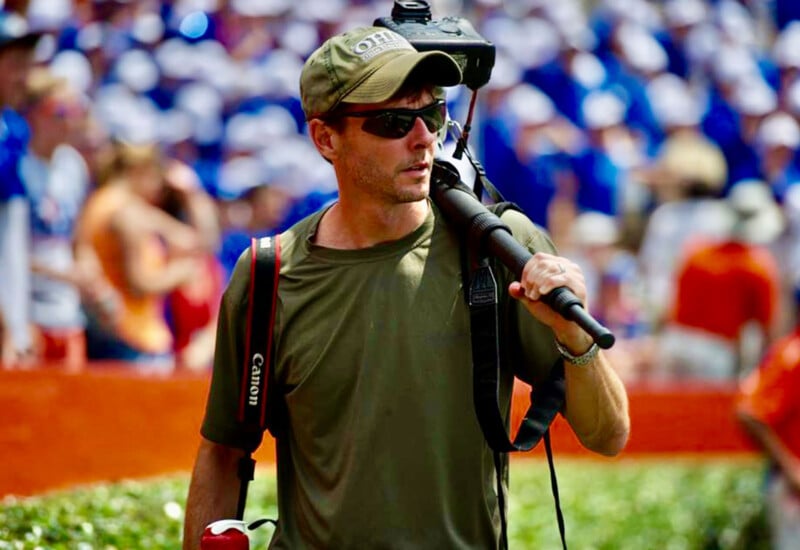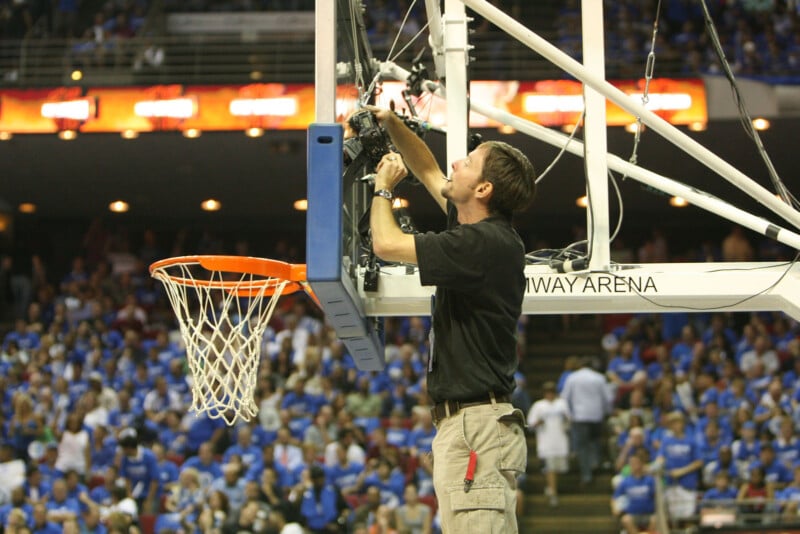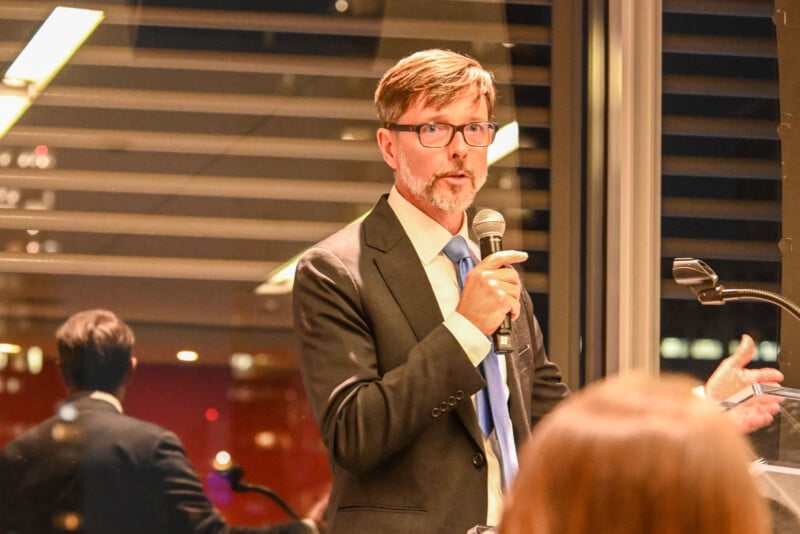How a Former Pro Photographer Leads the Fight to Protect Student Media
![]()
Citing budgetary deficits, Indiana University ended the print edition of its student newspaper and fired the director of student media, igniting national debate over censorship.
CNN aired a split-screen interview with its anchor/correspondent Jake Tapper and Gary Green, executive director of the Student Press Law Center. Green, based in Georgia, was trained as a photojournalist and worked for two decades as a news photographer.
The Student Press Law Center works to protect and expand the First Amendment rights of student journalists and provide them with education, training, and legal resources to safely and accurately cover their communities, often in the face of threats, intimidation, or censorship.
Celebrating its 50th year, the Student Press Law Center has been led by attorneys for most of its half-century. In 2023, its board decided — for the first time — to hire a non-lawyer as executive director, enlisting Green. His career started as a small-town news photographer in Kentucky.
Green runs the nonprofit organization; he works with a team of lawyers on the front lines of student media First Amendment disputes.
Staff attorney Mike Hiestand has fielded more than 20,000 hotline calls.
On October 15, the Student Press Law Center (SPLC) filed a brief in federal court supporting The Stanford Daily in its First Amendment lawsuit on behalf of international students. The brief was signed by San Francisco lawyer/SPLC board member Matthew Cate. Green spoke on behalf of the organization.
![]()
How Did a Photojournalist Become the Leader of a Law Center?
Green migrated from photography to teaching and advocating for the rights of media practitioners.
“For much of the past decade, I have been teaching and working with students in collaboration with First Amendment organizations in Florida and Georgia to get young people more involved in covering the state and local government and understanding how to use public records in their reporting,” he says. “Joining the Student Press Law Center was a natural extension of that work.”
Green took his first photography class as a senior at Hudson High School in northeast Ohio. After graduating from Ohio University’s School of Visual Communication in 1994, he began a succession of newspaper jobs, starting in Paducah, Kentucky.
Credentials
From 2002-2014, Green worked for The Orlando Sentinel, rising to Senior Multimedia Journalist. Throughout his 20-year shooting career, he covered multiple Super Bowls, World Series, NBA and NCAA championships, space shuttle launches, presidential elections, hurricanes and natural disasters, and the September 11, 2001, terror attacks.

In 2014, Green joined the Innovation News Center at the University of Florida. He mentored students while serving as the digital director and deputy news director for WUFT, north central Florida’s public media station that provides experiential learning for student journalists. He earned a master’s degree from the University of Florida in 2015.
For nearly seven years (2014-2020), Green was on the board of the First Amendment Foundation. In 2020, he moved to Georgia to serve as executive director of the Center for Sustainable Journalism at Kennesaw State University.
Green currently serves on advisory boards of the Florida Center for Government Accountability and the Center for Community News at the University of Vermont (working to grow news-academic partnerships with university and college-led student reporting programs to help fill gaps in local news deserts).
Is Photojournalism a Stepping Stone to Running a Law Center?
Yes, says Green, because photojournalists must overcome obstacles to tell stories in compelling ways.
“Leading a nonprofit legal support organization for student journalists is similar in that you are constantly having to anticipate and react to threats to press freedoms, political influence, fluctuating revenue streams, rising costs of doing business, emerging technology, and the constantly evolving journalism landscape,” Green says.

![]()
Challenges confronting student press are similar to those facing the broader news media: loss of print advertising, political pressures, and defunding public media.
Student Media at Center Stage
Student media play a larger role in areas of limited news coverage. Plus, college publications are breaking stories with impact:
- The Stanford Daily exposed academic misconduct by the university’s former president, leading to resignation.
- The University of Florida’s student newspaper revealed that spending under former President Ben Sasse tripled in his first year, prompting an investigation.
- The Daily Northwestern published a series of reports on hazing and sexual assault within the football team, which led to the firing of the head coach.
- The Yale Daily News coverage of mental health leave policies led to a federal lawsuit and policy changes at the university.
Several student journalists have been arrested in recent years for legally covering protests and for their constitutionally protected speech. For some, the first phone call they made was to the Student Press Law Center. Student journalist Charlotte Hampton, who was arrested while covering protests on Dartmouth’s campus in 2024, said that she was lost and didn’t know what to do until speaking with the Center’s lawyers.
“I wasn’t really sleeping for the week between getting arrested and the prosecutor dropping my charges,” she said. “SPLC was the biggest part of this outpouring of support. After I spoke to SPLC, I was able to sleep again. They brought me a lot of solace when they gave me guidance about how I could get my charges dropped and expunged from my record.”
In situations like Hampton’s, the Student Press Law Center intervenes to provide legal support and builds coalitions to condemn the actions and institutions that violate their First Amendment rights.

Indiana Student Daily
After Indiana University ended the print edition of the Indiana Daily Student and fired the director of student media, billionaire alumnus/benefactor Mark Cuban posted a pointed, widely quoted response: “Not happy. Censorship isn’t the way.”
The university is forming a task force to examine the student publication’s editorial independence and funding. Student Press Law Center Staff is engaged via its website, staff attorney Jonathan Gaston-Falk, and executive director Green.
As Green wrapped up his on-air interview with Jake Tapper at CNN, Tapper expressed encouragement to Green and his student media constituency: “Keep up the good fight, student journalists out there. We see you.”
Gary Green: “Thanks so much. Appreciate it.”
About the author: Ken Klein lives in Silver Spring, Maryland; he is retired after a career in politics, lobbying, and media including The Associated Press and Gannett in Florida. Klein is an alumnus of Ohio University and a member of the Dean’s Advisory Council of the Scripps College of Communication. Professionally, he has worked for Fort Myers News-Press (Gannett), The Associated Press (Tallahassee), Senator Bob Graham, and the Outdoor Advertising Association of America (OAAA).